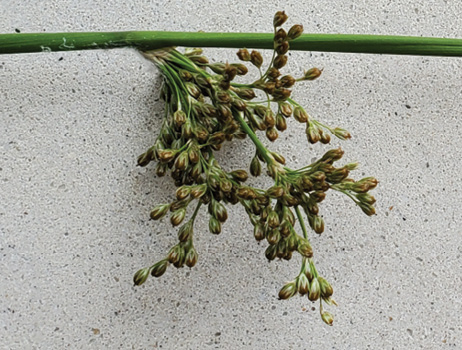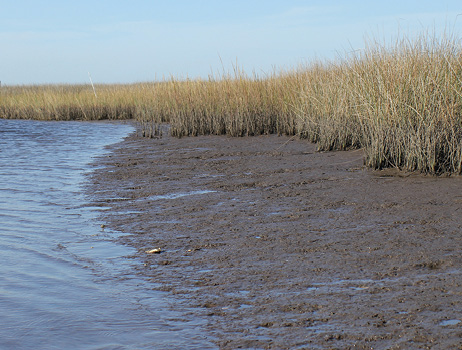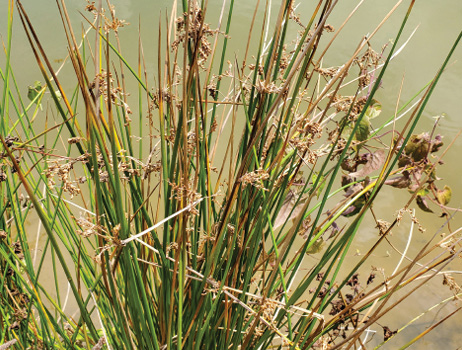Juncus | Juncus spp.
Emergent | Native



along a pond edge.
Rushes of the genus Juncus are flowering plants that grow along the margins of many slow-moving water bodies. They are commonly confused with grasses or sedges.
Juncus is characterized by round, hollow, and pointed stems with leaves that form a sheath around the stem. Stems grow in groups and create dense clumps of foliage.
The flowers are small and usually brown. Many seeds form in a pod on the flower structure and are dry.
The flower is terminal but often appears on the side of the stem because the subtending bract extends farther than the flower. This appearance of being on the side and the round, hollow stems make Juncus easy to identify.
Management Value
The seeds of Juncus are consumed by songbirds, waterfowl, muskrats, rabbits, and quail. Many species use rushes for nesting and concealment habitat. Rushes rarely take over a pond but can interfere with shoreline access. This species can be planted or encouraged to diversify habitat and provide a more natural aquascape. Containment can be easily achieved by limiting shallow water and moist soil areas and with spot-spraying herbicides.
Recommended Controls
Option 1: 2,4-D (3.8-pound formulation). For each gallon of water, mix 0.6 ounce 2,4-D and 1.3 ounces non-ionic surfactant. Spray to wet all exposed leaves. Do not exceed annual herbicide rate limits as stated on the product label.
Multiple applications are likely necessary to achieve eradication.
Read and follow all chemical label instructions, especially the section on the use of personal protection equipment.
Photo Credits Middle: Scott Rush, Mississippi State University Department of Wildlife, Fisheries, and Aquaculture.

The information given here is for educational purposes only. References to commercial products, trade names, or suppliers are made with the understanding that no endorsement is implied and that no discrimination against other products or suppliers is intended.
Publication 3735-26 (POD-11-23)
By Wes Neal, PhD, Extension/Research Professor, Wildlife, Fisheries, and Aquaculture; Dennis Riecke, Fisheries Coordinator, Mississippi Department of Wildlife, Fisheries, and Parks; and Gray Turnage, PhD, Assistant Research/Extension Professor, GeoSystems Research Institute
The Mississippi State University Extension Service is working to ensure all web content is accessible to all users. If you need assistance accessing any of our content, please email the webteam or call 662-325-2262.



